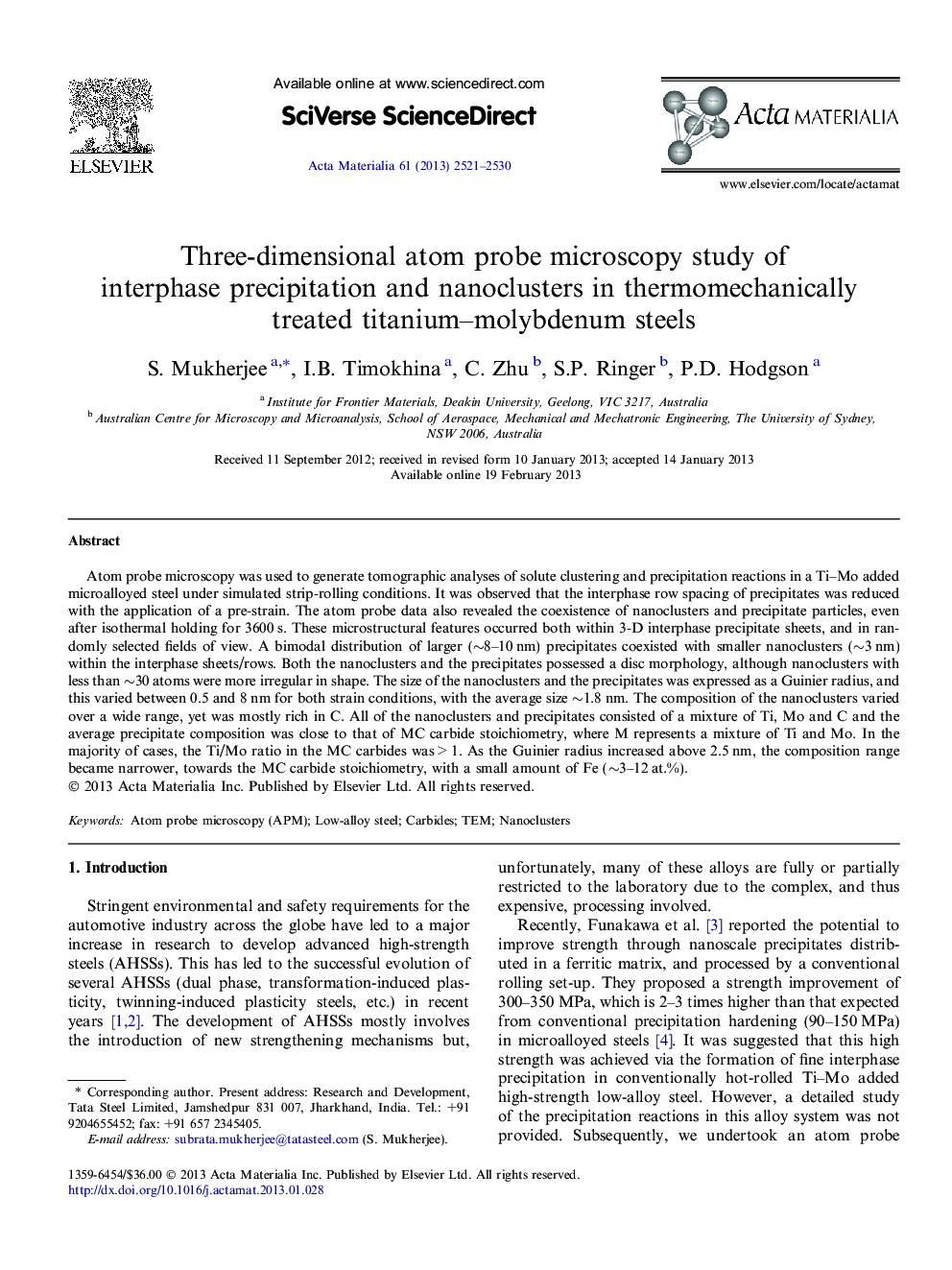| Article ID | Journal | Published Year | Pages | File Type |
|---|---|---|---|---|
| 10620199 | Acta Materialia | 2013 | 10 Pages |
Abstract
Atom probe microscopy was used to generate tomographic analyses of solute clustering and precipitation reactions in a Ti-Mo added microalloyed steel under simulated strip-rolling conditions. It was observed that the interphase row spacing of precipitates was reduced with the application of a pre-strain. The atom probe data also revealed the coexistence of nanoclusters and precipitate particles, even after isothermal holding for 3600 s. These microstructural features occurred both within 3-D interphase precipitate sheets, and in randomly selected fields of view. A bimodal distribution of larger (â¼8-10 nm) precipitates coexisted with smaller nanoclusters (â¼3 nm) within the interphase sheets/rows. Both the nanoclusters and the precipitates possessed a disc morphology, although nanoclusters with less than â¼30 atoms were more irregular in shape. The size of the nanoclusters and the precipitates was expressed as a Guinier radius, and this varied between 0.5 and 8 nm for both strain conditions, with the average size â¼1.8 nm. The composition of the nanoclusters varied over a wide range, yet was mostly rich in C. All of the nanoclusters and precipitates consisted of a mixture of Ti, Mo and C and the average precipitate composition was close to that of MC carbide stoichiometry, where M represents a mixture of Ti and Mo. In the majority of cases, the Ti/Mo ratio in the MC carbides was > 1. As the Guinier radius increased above 2.5 nm, the composition range became narrower, towards the MC carbide stoichiometry, with a small amount of Fe (â¼3-12 at.%).
Related Topics
Physical Sciences and Engineering
Materials Science
Ceramics and Composites
Authors
S. Mukherjee, I.B. Timokhina, C. Zhu, S.P. Ringer, P.D. Hodgson,
